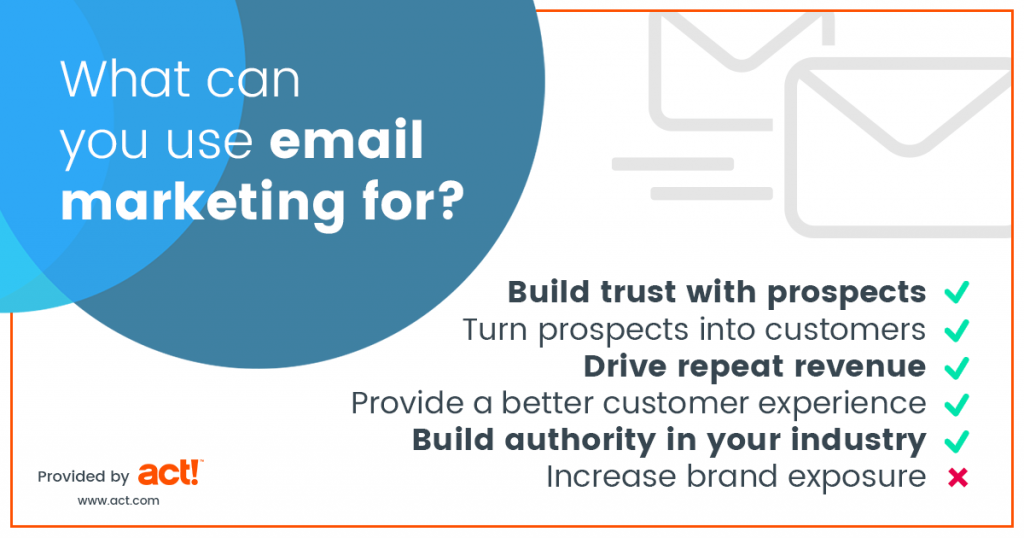Email marketing is a digital marketing strategy that involves sending emails to a targeted audience. It aims to promote products, services, or brand awareness.
Email marketing has emerged as a powerful tool for businesses to connect with customers. This strategy allows companies to send tailored messages directly to their audience’s inbox. Marketers can build relationships and nurture leads through engaging content. With the rise of personalized communication, email marketing stands out for its effectiveness in reaching potential clients.
Businesses can track engagement metrics, such as open and click-through rates, to gauge success. By segmenting lists and crafting compelling messages, companies can enhance their reach. Overall, email marketing remains a cost-effective way to engage customers and drive conversions.
Introduction To Email Marketing
Email marketing is a powerful tool for businesses. It helps connect with customers directly. This method is cost-effective and reaches a large audience. Companies can share news, offers, and updates with just a click. Understanding email marketing is essential for modern business success.
The Basics Of Digital Correspondence
Email marketing uses emails to communicate with potential customers. Here are the core elements:
- Subscriber Lists: Collect email addresses from interested users.
- Content Creation: Craft engaging emails with valuable information.
- Segmentation: Divide your audience based on interests.
- Personalization: Tailor messages to individual needs.
Effective email marketing focuses on delivering relevant content. It builds trust and encourages customer loyalty. Remember, the goal is to provide value in every message.
The Role In Modern Outreach
Email marketing plays a vital role in today’s business strategies. It offers various benefits:
| Benefit | Description |
|---|---|
| Cost-Effective | Low cost compared to traditional advertising. |
| Direct Communication | Messages go straight to the inbox of customers. |
| Measurable Results | Track open rates, clicks, and conversions easily. |
| Brand Awareness | Regular emails keep your brand top-of-mind. |
Utilizing email marketing effectively can transform outreach efforts. It connects brands with their audience in a personal way. This method remains crucial for building long-lasting relationships.
Historical Evolution
Email marketing has a rich history. It started with simple text messages. Over time, it evolved into complex campaigns. Understanding its journey helps businesses today.
From Simple Messages To Complex Campaigns
In the beginning, email was basic. Marketers sent plain text emails. These messages had little design and few features.
- 1971: The first email was sent by Ray Tomlinson.
- 1993: The first email marketing campaign emerged.
- 1996: Companies began using HTML emails.
- 2000s: Personalization and segmentation became common.
As technology improved, so did email marketing. Marketers now use rich designs and engaging content. They also track user behavior. This data helps tailor campaigns.
Technological Advancements Influencing Email Marketing
Technology has played a big role in email marketing. New tools and platforms changed how businesses communicate.
| Year | Advancement |
|---|---|
| 2004 | Spam filters improved, making emails safer. |
| 2010 | Mobile devices became common for checking email. |
| 2015 | Artificial intelligence started optimizing campaigns. |
Modern email marketing tools offer automation and analytics. Businesses can send targeted messages quickly. They can analyze results to improve future efforts.
Key Components
Email marketing is powerful. It builds relationships with customers. Understanding its key components is essential for success. Three crucial components stand out: building an email list, crafting compelling content, and design considerations. Each part plays a vital role in engaging your audience.
Building An Email List
A strong email list is the foundation of effective email marketing. Here are some strategies to build it:
- Lead Magnets: Offer free resources like eBooks or discounts.
- Sign-up Forms: Place forms on your website and social media.
- Events and Webinars: Collect emails during registrations.
- Referral Programs: Encourage subscribers to invite friends.
Ensure your sign-up process is simple. Ask for minimal information. A name and email are often enough.
Crafting Compelling Content
Content drives engagement. Your emails should be informative and entertaining. Consider these tips:
- Personalization: Use the recipient’s name.
- Clear Subject Lines: Grab attention quickly.
- Valuable Information: Share tips, news, or special offers.
- Call to Action: Encourage specific actions, like visiting your site.
Keep your language simple and direct. Aim for a friendly tone. Use short paragraphs and bullet points to enhance readability.
Design And Layout Considerations
Design matters in email marketing. A clean layout attracts readers. Here are key design tips:
| Design Element | Best Practices |
|---|---|
| Colors | Use brand colors for consistency. |
| Fonts | Choose readable fonts and sizes. |
| Images | Include relevant images to enhance messages. |
| Mobile Optimization | Ensure emails look good on all devices. |
Test your design before sending. Check how it appears in different email clients. A well-designed email boosts engagement.
Email Marketing Strategies
Email marketing is powerful. Effective strategies enhance engagement and boost sales. Here are key strategies to optimize your email campaigns.
Segmentation And Personalization
Segmentation divides your audience into groups. This helps target specific interests. Personalization makes emails feel unique.
- Demographic Segmentation: Age, gender, location.
- Behavioral Segmentation: Purchase history, email engagement.
- Psychographic Segmentation: Interests, values, lifestyle.
Personalized emails increase open rates. Use the recipient’s name. Tailor content based on their preferences.
| Type | Benefits |
|---|---|
| Demographic | Targets specific age and gender |
| Behavioral | Increases relevance based on actions |
| Psychographic | Engages based on personal values |
Automation And Triggered Emails
Automation saves time. It sends emails automatically based on user actions. Triggered emails respond to specific behaviors.
- Welcome Emails: Greet new subscribers.
- Abandoned Cart Emails: Remind customers of items left behind.
- Re-engagement Emails: Win back inactive subscribers.
Automation helps maintain consistent communication. Use it to nurture leads effectively. This strategy enhances customer loyalty.
A/b Testing For Optimization
A/B testing helps determine what works best. It compares two versions of an email. This ensures maximum effectiveness.
- Subject Line: Test different phrasing.
- Call to Action: Experiment with button colors and texts.
- Email Design: Try different layouts.
Analyze results to improve future campaigns. Make data-driven decisions. A/B testing leads to better engagement and higher conversion rates.
Metrics To Measure Success
Measuring success in email marketing is vital. It shows how well your campaigns perform. Understanding key metrics helps improve your strategy.
Open Rates And Click-through Rates
Open rates</strong indicate how many people opened your email. A high open rate means your subject line was effective. Aim for a rate above 20% for good performance.
Click-through rates (CTR) measure how many clicked links in your email. This shows engagement. A good CTR is generally above 2%. Here’s how to improve both metrics:
- Craft catchy subject lines.
- Personalize your emails.
- Segment your audience.
- Use A/B testing to find what works.
Conversion Metrics
Conversion metrics track actions taken after clicking your email. This could be making a purchase or signing up. High conversion rates show your email was effective.
Key metrics to consider include:
| Metric | Definition | Importance |
|---|---|---|
| Sales Conversion Rate | Percentage of emails leading to sales | Measures direct revenue from campaigns |
| Lead Conversion Rate | Percentage of emails generating leads | Indicates interest in your offer |
Analyzing Roi
Return on Investment (ROI) shows the profitability of your email marketing. Calculate ROI using this formula:
ROI = (Revenue - Cost) / Cost 100A positive ROI means your campaigns are profitable. Track costs like:
- Email platform fees
- Design costs
- Content creation
Regularly analyze these metrics. Use the data to refine your strategy. Focus on what works to maximize success.
Legal And Ethical Considerations
Email marketing is powerful. It connects businesses with customers directly. Yet, it comes with responsibilities. Following legal and ethical guidelines is crucial. Ignoring these can lead to serious consequences.
Understanding Spam Laws
SPAM laws protect consumers from unwanted emails. These laws vary by country. Familiarity with these laws is essential for marketers. Here are key points:
- CAN-SPAM Act (USA): Requires clear sender information.
- GDPR (EU): Requires consent before sending emails.
- CASL (Canada): Strong penalties for non-compliance.
Marketers must include an easy way to unsubscribe. This ensures compliance and builds trust.
Best Practices For Privacy And Data Protection
Respecting user privacy is vital. Protecting personal data builds customer trust. Here are best practices:
- Collect Only Necessary Data: Limit data collection to what you need.
- Secure Data: Use encryption to protect customer information.
- Transparency: Clearly explain how you will use their data.
- Regular Audits: Review data practices often for compliance.
Following these practices helps avoid legal issues. It also enhances your brand’s reputation.
Integrating With Other Marketing Channels
Email marketing shines when paired with other marketing channels. This integration enhances reach and engagement. It drives better results and creates a unified brand experience.
Synergy With Social Media
Email marketing and social media work well together. They amplify each other’s strengths. Here’s how:
- Cross-Promotion: Share email content on social platforms.
- Audience Growth: Encourage social followers to join your email list.
- Engagement Boost: Share user-generated content from emails on social media.
Using social media links in emails can increase followers. Promote your social media in emails to grow your audience.
Combining With Content Marketing Efforts
Email marketing supports content marketing effectively. It brings valuable content straight to the audience’s inbox. Here are key points to consider:
| Strategy | Description |
|---|---|
| Newsletters | Share recent blog posts and articles. |
| Exclusive Content | Offer eBooks or whitepapers through email. |
| Calls to Action | Encourage readers to visit your website for more. |
Emails can promote high-quality content. This drives traffic and boosts SEO rankings.
Use email to nurture leads. Share valuable insights and resources to build trust.

Credit: m.youtube.com
Future Of Email Marketing
The future of email marketing is bright and full of potential. Businesses will use new technologies to connect better with customers. Personalization and automation will lead the way. Marketers will adopt innovative strategies to enhance engagement and drive results.
Predicting Trends
Several trends will shape email marketing in the coming years:
- AI Integration: Artificial Intelligence will analyze data for better targeting.
- Interactive Emails: Emails will include buttons, polls, and quizzes.
- Mobile Optimization: More emails will be designed for mobile devices.
- Personalized Content: Tailored messages will increase open rates.
- Privacy Compliance: Marketers will focus on data protection and user consent.
Innovations On The Horizon
Innovative tools and technologies will change email marketing:
| Innovation | Description |
|---|---|
| Predictive Analytics | Forecasts customer behavior and preferences. |
| Dynamic Content | Content changes based on user behavior. |
| Voice Technology | Emails will integrate with voice-activated devices. |
| Blockchain | Enhances security and verifies sender identity. |
These innovations will make email marketing more effective. Businesses will engage customers like never before. Keeping an eye on these trends is crucial for marketers. The future holds endless possibilities for email marketing.
Case Studies
Case studies provide real-world examples of email marketing success and failures. They help us understand what works and what doesn’t in email campaigns. Let’s explore some notable examples.
Successful Email Campaigns
Several brands have achieved great results through effective email marketing. Here are a few standout campaigns:
| Brand | Campaign Description | Results |
|---|---|---|
| BuzzFeed | Daily newsletters featuring engaging quizzes and articles. | Increased open rates by 80%. |
| Airbnb | Personalized recommendations based on user behavior. | Boosted bookings by 300%. |
| Sephora | Exclusive offers for loyalty members. | Increased customer retention by 50%. |
These brands used creativity and personalization to connect with their audience. They focused on delivering value and engaging content.
Lessons Learned From Failed Campaigns
Not every campaign succeeds. Learning from mistakes is crucial. Here are some common pitfalls:
- Ignoring the audience: Sending irrelevant content leads to unsubscribes.
- Overwhelming frequency: Bombarding users with emails can annoy them.
- Poor subject lines: Uninteresting subject lines result in low open rates.
One case study involved a well-known retail brand. They sent a promotional email to their entire list without segmenting. The result? A 20% increase in unsubscribes.
Another example is a travel company that sent emails too frequently. Customers complained, leading to a 30% drop in engagement. These failures highlight the importance of understanding your audience and maintaining balance.

Credit: www.oberlo.com
Getting Started With Email Marketing
Email marketing is a powerful tool for businesses. It helps connect with customers directly. Starting your email marketing journey can seem daunting. Follow these steps to make it easier.
Choosing The Right Platform
Selecting the right email marketing platform is essential. Here are some popular platforms:
| Platform | Features | Best For |
|---|---|---|
| Mailchimp | User-friendly, templates, analytics | Beginners |
| Constant Contact | Event marketing, surveys | Small businesses |
| SendinBlue | Email automation, SMS marketing | Advanced users |
Consider these factors:
- Cost
- Ease of use
- Customer support
Setting Clear Objectives
Define your goals before starting. Clear objectives guide your email strategy.
- Increase sales
- Build brand awareness
- Grow your email list
- Engage existing customers
Make your objectives specific and measurable. Use these tips:
- Set a target for open rates.
- Track click-through rates.
- Monitor conversion rates.
With the right platform and clear objectives, you can succeed in email marketing.

Credit: www.act.com
Frequently Asked Questions
What Are The Benefits Of Email Marketing?
Email marketing offers numerous benefits for businesses. It allows for direct communication with customers, fostering stronger relationships. Additionally, it’s cost-effective and can yield high returns on investment. Targeted campaigns can boost engagement, leading to increased sales. Overall, it helps build brand loyalty and awareness.
How Does Email Marketing Work?
Email marketing involves sending targeted messages to a specific audience. Businesses collect email addresses through various methods, like sign-up forms. They then create engaging content and send it via email campaigns. Analytics tools track performance, allowing for adjustments. This helps optimize future campaigns for better results.
Is Email Marketing Effective For Small Businesses?
Yes, email marketing is highly effective for small businesses. It provides a cost-efficient way to reach potential customers directly. With targeted campaigns, small businesses can build relationships and drive sales. Email marketing also allows for personalized communication, which enhances customer engagement.
It’s a vital tool for growth.
What Tools Are Used For Email Marketing?
Several tools assist in managing email marketing campaigns. Popular options include Mailchimp, Constant Contact, and SendinBlue. These platforms offer features like automation, analytics, and customizable templates. They help streamline the process and improve efficiency. Choosing the right tool can significantly enhance your email marketing efforts.
Conclusion
Email marketing remains a powerful tool for businesses of all sizes. It fosters direct communication with customers and drives engagement. By crafting personalized messages, brands can build lasting relationships. Embracing this strategy can boost sales and enhance brand loyalty. Start leveraging email marketing today to see tangible results.


